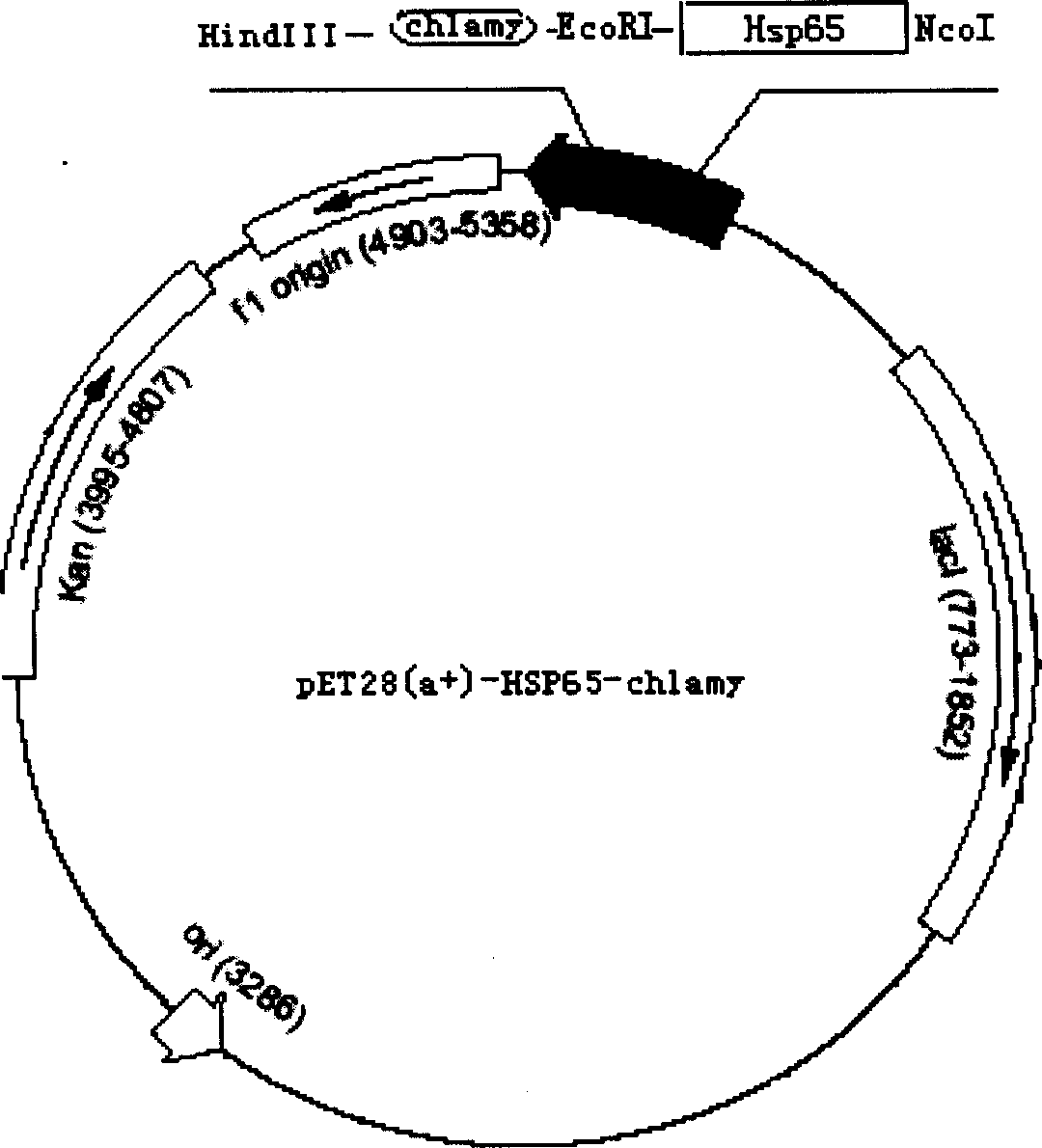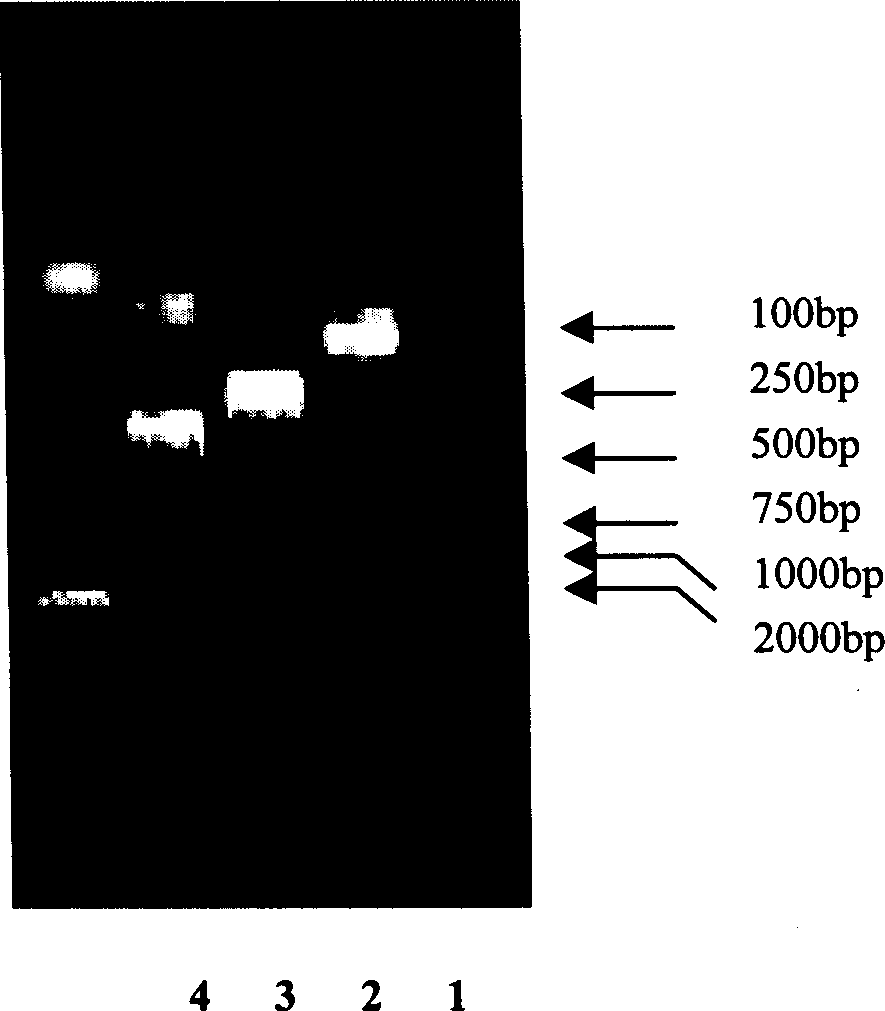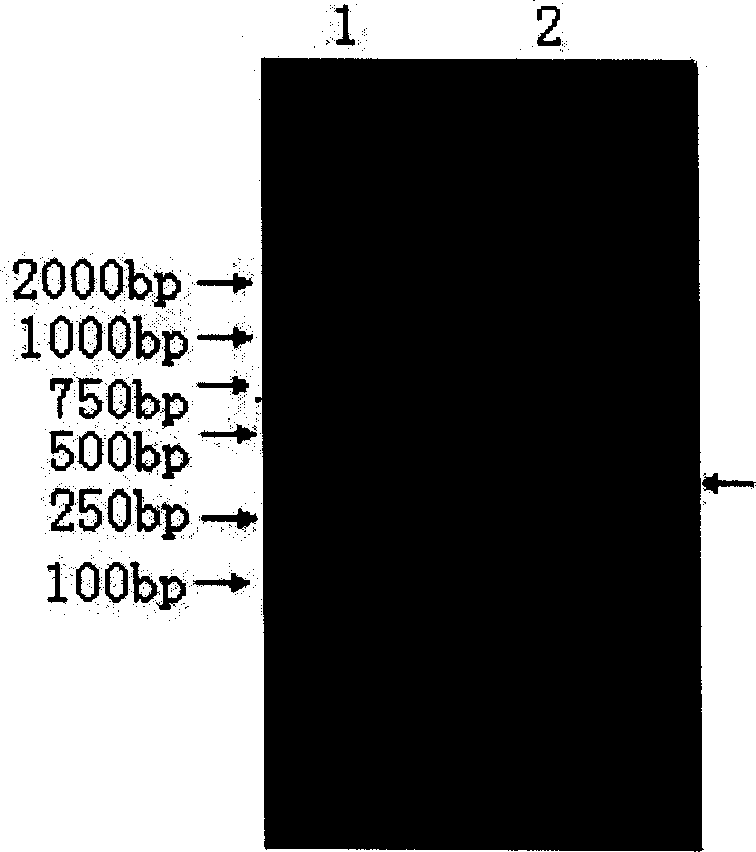Recombination protein for preventing human trachoma bedsnia infestation and its use
A technology of Chlamydia trachomatis and recombinant protein, applied in the field of genetic engineering, can solve problems such as unrealistic immune protection
- Summary
- Abstract
- Description
- Claims
- Application Information
AI Technical Summary
Problems solved by technology
Method used
Image
Examples
Embodiment 1
[0063] In the following examples, the sources and trade names of the reagents used and / or those whose constituents must be listed are only indicated once. The same reagents used thereafter will not repeat the above content unless otherwise specified. Example 1 Artificial construction of epitope gene
[0064] Connect the selected epitope genes on the main outer membrane protein together, and construct an EcoRI restriction site at the amino-terminus, and a HindIII restriction site at the carboxy-terminus, to obtain Chlamydia trachomatis that can activate human T cells A gene encoding a major outer membrane protein epitope (hereinafter referred to as "chlamy").
[0065] The specific method is as follows: artificially construct the selected epitope gene through 3 rounds of PCR cycles. Primer 3 and primer 4 serve as templates and primers for the first round of PCR; then use the first round of PCR products as templates and primers 2 and 5 as primers for the second round of PCR; th...
Embodiment 2
[0093] The results of agarose gel electrophoresis of the three rounds of PCR products are shown in the appendix figure 2 . Example 2 TA Cloning of Epitope Genes
[0094] The PCR product was cloned by TA cloning method (J. Sambrook, Cold Spring Harbor Laboratory Press, Molecular cloning, 1989), and the vector of TA cloning was PMD 18-T Vector (TakaRa Company). The specific method is as follows: 1. Recovery of DNA:
[0095] 1. Electrophoresis of the third-round PCR product with 2% agarose gel (1×TAE, 150-200mA, 0.5 hour);
[0096] 2. Cut the gel containing the DNA fragment from the agarose gel and put it into a centrifuge tube;
[0097] 3. Add 3 times the volume of sol solution (Beijing Dingguo Company), and bathe in water at 45-55°C for 5-10 minutes to completely melt the glue;
[0098] 4. Add 10ul glass milk (Beijing Dingguo Company), flick the bottom of the tube to mix well, and then put it in a water bath at 45-55℃ for 5-10min, during which time mix every 2-3min;
[00...
Embodiment 3
[0114]Example 3 Obtaining the coding gene of Mycobacterium tuberculosis 65KD heat shock protein (BCG HSP65) and cloning it into pET28(+) expression vector
[0115] BCG Mycobacterium tuberculosis was obtained from Changchun Institute of Biological Products. Use Sutong potato medium (Starch Potato Code NO C250-1 Beijing Dingguo Biology) to cultivate BCG Mycobacterium tuberculosis at a temperature of 37-39°C, and the grown BCG Mycobacterium tuberculosis will appear as dry wrinkled light yellow bacteria membrane. The pellicles were collected, from which BCG M. tuberculosis genomic DNA was extracted.
[0116] The method of extracting Mycobacterium tuberculosis genomic DNA refers to Molecular Cloning book (J.Sambrook, separate high-molecular-weight DNA (Isolation of high-molecular-weight DNA from mammalian cells) from mammals), 9.16-9.22, Cold Spring Harbor Laboratory Press, Molecular cloning, 1989).
[0117] Isolation of heat shock protein 65 (HSP65) structural gene from Mycobac...
PUM
 Login to View More
Login to View More Abstract
Description
Claims
Application Information
 Login to View More
Login to View More - R&D
- Intellectual Property
- Life Sciences
- Materials
- Tech Scout
- Unparalleled Data Quality
- Higher Quality Content
- 60% Fewer Hallucinations
Browse by: Latest US Patents, China's latest patents, Technical Efficacy Thesaurus, Application Domain, Technology Topic, Popular Technical Reports.
© 2025 PatSnap. All rights reserved.Legal|Privacy policy|Modern Slavery Act Transparency Statement|Sitemap|About US| Contact US: help@patsnap.com



